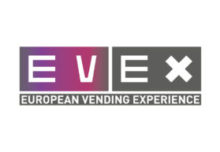New market research shows that the value of the UK water cooler market has broken through the £130 million barrier, reaching £133 million in 2017, the British Water Cooler Association (BWCA) annual conference heard.
Revenue increased by 3.5%, compared with 2016, when the market’s value stood at £129 million.
In a report presented to the Association by global food and drink experts Zenith, the conference heard that 2017 was the 5th successive year of stable and steady growth. The total number of water cooler units grew by 1.8% to 663,000 across the United Kingdom. This is the highest percentage increase since the 2007 financial crisis.
The BWCA conference and trade show held in Nottingham is one of the key events in the water cooler calendar. Its theme, The Journey, reflected a talk by the keynote speaker, trans-Atlantic rower Debra Searle MVO MBE. The event attracted around 115 BWCA members and guests.
The opening guest speaker was Karen Wells, principal consultant at Zenith, delivering the annual market data review. This is the 28th year that Zenith has researched the cooler market.
Karen told the conference: “The sector continues to see gains in volume and value for both mains-fed – point of use – and bottled water coolers, which is a positive and pleasing trend.”
The market split between the two types of coolers has remained relatively stable since 2012. In 2017, mains-fed, plumbed in point of use units performed marginally better in terms of revenue growth, but still held a much smaller share of sales at 21%. Bottled water coolers accounted for a far larger portion, amounting to 79% of revenue.
By number of units, point of use represented a stable 47%, with bottled water units just ahead at 53%. At the end of 2017, the United Kingdom had 349,000 bottled water and 314,000 point of use coolers installed.
The volume of bottled water sold for water coolers increased by 2% to 313 million litres in the year. Both the number of units and volume throughput increased, with each cooler now delivering an average of 900 litres, up 1% on 2016. In 2012, throughput per cooler was 786 litres. This 14.5% increase over five years led Karen to comment that “healthy hydration convenience” is very much at the forefront of thinking by water cooler users.
She added that another influence on market value growth was average monthly bottled water cooler rental prices seeing a slight increase along with a modest rise in the price per bottle.
By contrast, point of use rental values remain under pressure, she said. Some price cutting had been noted by Zenith in certain areas, as a desire to gain share had been a focus for some companies. However, this price cutting did not seem to have been as marked as in previous years and several companies had stated that they seek to “stand firm” on pricing.
The direct effect on sales by seasonality and weather has diminished, Karen remarked. “The weather effect does not appear as prevalent as it used to be. The choice to drink water centres more around a wish for healthy hydration throughout the year. There really is a growing habit of drinking water more regularly.”
She added that some customer groups have been and will remain more weather-sensitive, citing the construction sector as one such example. “Whilst a hot building site will obviously draw people to take advantage of the water cooler, it is in the office environment where most coolers are installed. As we have seen with smaller bottles of water, the weather is becoming less of a direct influence on office workers.”
Looking to future opportunities for the sector, Zenith noted that there remain challenges in expanding the use of bottled water coolers to homes. However, the desire for healthy hydration at home as well as at work, combined with the recent focus on reducing plastic packaging, may create greater opportunities for under-sink water filters and compact water coolers.
Another potential area for growth could be hospitality, Karen Wells concluded. “Some hotels and restaurants are showing interest in installing back of house filters to offer water to customers, with particular interest in machines which can also produce sparkling water.”
BWCA Chairman Jon Wicks said: “Our sector becomes ever more professional and this is due not only to our member companies but also to the high professional standards maintained by the work of the British Water Cooler Association. We thank Karen for once again presenting Zenith’s market findings to our annual conference and her colleague Francesca Hall who undertook much of the research. This is always a highlight of our annual gathering as it helps focus our minds on the year ahead.”
In addition to Debra Searle and Karen Wells, other speakers at the BWCA conference were Phillipa Atkinson-Clow, general manager of the BWCA, talking about her 25 years at the helm of the Association; Brendan Hanlon, from Just a Drop, celebrating with members the Association’s continuing efforts in support of his charity in bringing clean water sources to villagers in Africa; and Master of Ceremonies, the BWCA chairman, Jon Wicks.
Sponsors
The event this year attracted a record number of sponsors. They were:
- Pureflo – conference
- Crystal Mountain – trade show
- Waterlogic UK – registration portal
- 4 Aces – gala dinner
- Nupik-Flo – keynote speaker
- Database Workshop – charity auction
- BWT UK – Chairman’s welcome supper
- H2O Direct – conference lunch
- Cosmetal – Batak wall
- Bericap UK – signage
- Calomax – Casino




